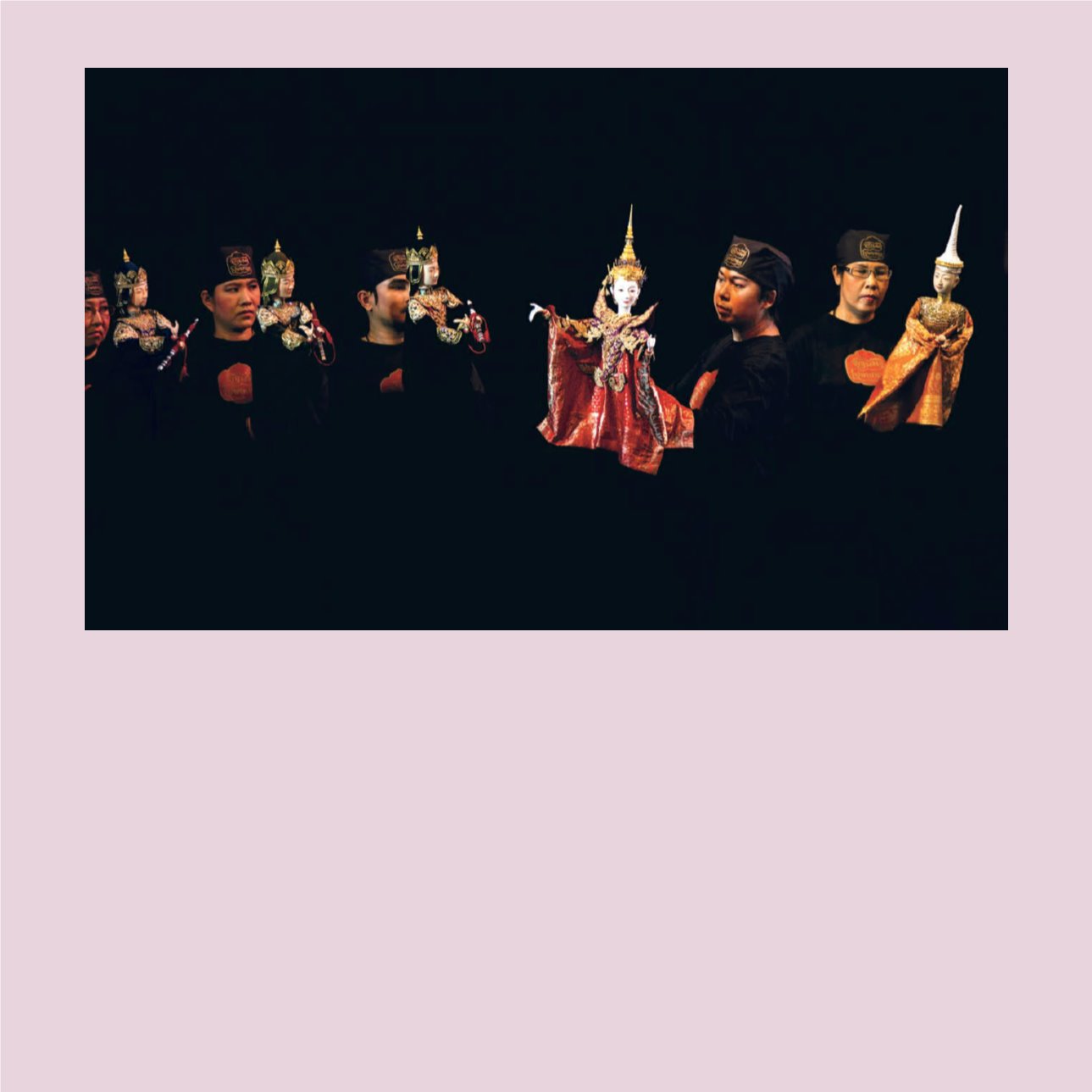

Performing Arts Spiritual Performances
|
97
Hun Krabok
Hun Krabok (bamboo puppet theatre) originated in the reign of King Rama V by adapting
the Chinese Hainan puppet theatre which used bamboo as a body stem of the puppet. Therefore,
it was later called Hun Krabok since the puppets use bamboo as the trunk of their body. The
key feature of the puppet is its half body with the following main parts: Head - representing
different roles of the hero, the heroine, the demon, the monkey, the clown, and the animals;
Hands - the right hand of the hero, the demon and the clown is clenched in a fist for holding
a weapon, while their left hand is in a Tang Wong Ram (dance setting) gesture. The hands of
heroine are both set in the Tang Wong Ram gesture. Each of both hands is attached to a stick,
called Mai Takiap, for the movement of hand gesture; and Costume, which is a sack covering
from the shoulders to half-body length, beautifully embroidered. The hero has epaulets and an
embroidered collar; the heroine has an embroidered cloak and collar. The method of playing
the puppet is adapted from the dance but in the way of imitating real human gestures. Famous
stories for playing Hun Krabok are derived from Lakhon Nok (All male performing theatre) such
as Laksanawong, Sang Thong, Kaeo Na Ma (horse-faced woman), Suwanna Hong, and Phra
Aphai Mani.
• Hun Krabok performance of the legend of King
Naresuan on “Lilit Taleng Phai (The Defeated)”
at the Chakrabhand Foundation


















